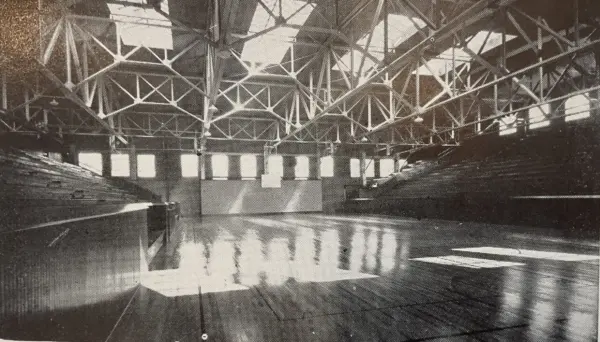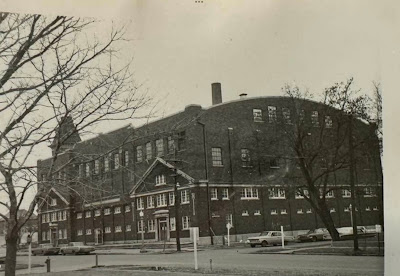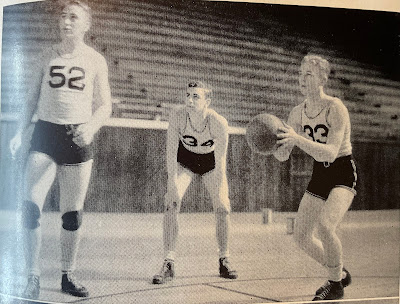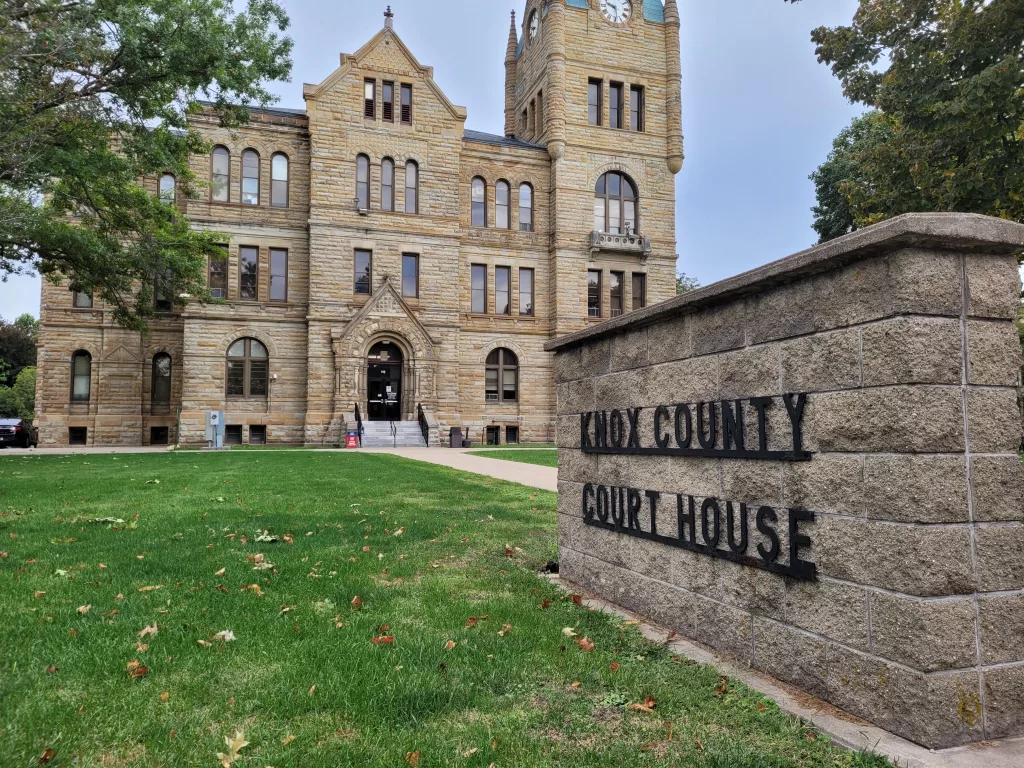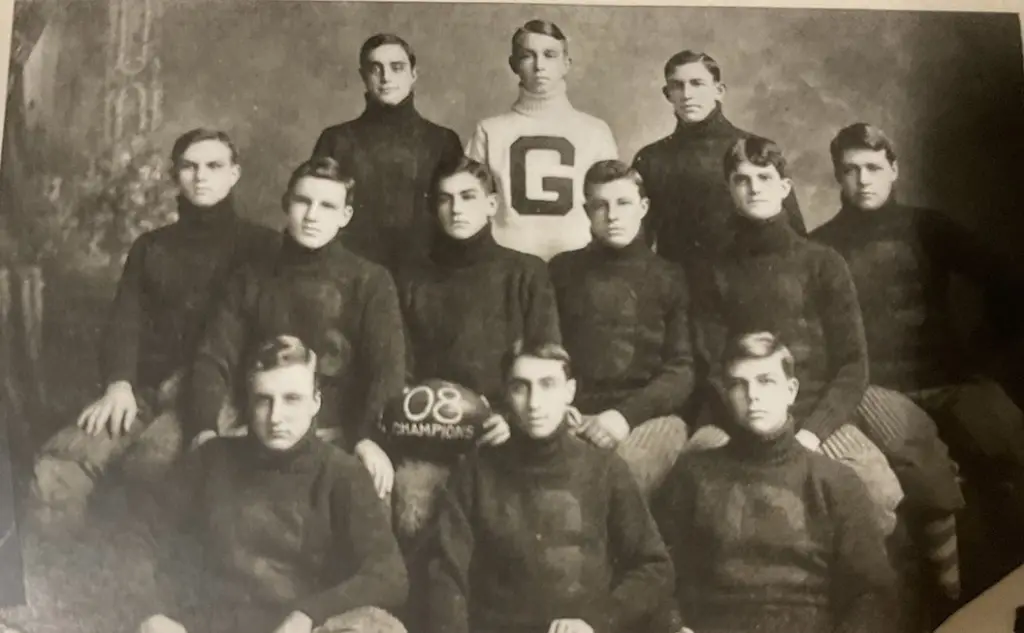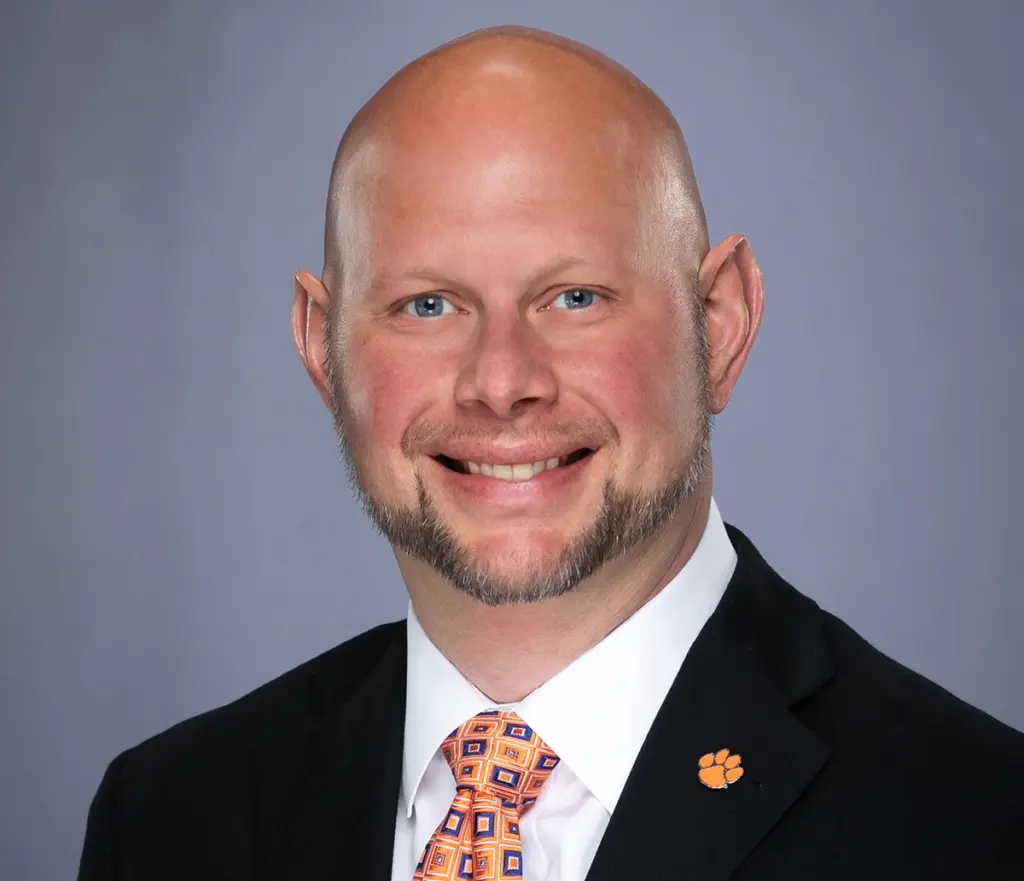Former Galesburg High School girls basketball coach Evan Massey shares his insights on the game and other topics through his Massey Basketball blog, now featured here on WGIL.
According to the monument on the NW corner of Broad St. and Tompkins St., Galesburg High School was moved to this location in 1906.
Galesburg High School had its main entrance off of Broad St. but the building was an L shaped building with part facing Broad and part facing Tompkins.
Steele Gym was built diagonally opposite of GHS in the same block but on the SE corner of Simmons and Cedar. Historians say the original Steele Gym opened up shortly after GHS, sometime between 1906 and 1915.
At this time, interscholastic basketball was in its infancy. Many of the teams were really clubs created by interested boys and often coached by high school boys or the team captain. High school basketball in its infancy was not a much of a spectator sport. So when Steele was originally constructed, there would not have been a need to build a gym for spectators. The two gyms did not have bleachers but were just for PE.
The 1913 GHS basketball team that won the State Championship (which was in reality an invitational tourney with limited schools participating), played their home games in the YMCA that was on North Prairie Street.
The building is still standing. At one point it was the place Gale Wards Sporting Goods printed t-shirts, then the broadcast center for WAIK, and more recently several restaurants. It is in the parking lot south of the Presbyterian Church.
The YMCA was constructed like many gyms of this time. It was small, the court probably only 40-50 feet long (regulation is 84 feet). It had a “running track” that went around the court, where at this time the few parents and friends could watch the game from.
A new YMCA opened in 1914 on the NW corner of Seminary and Ferris. It is just north of Innkeepers. I have found no evidence that GHS ever played their games at this “new YMCA.
The Knox College gym was located just east of the Old Main building on S. Cherry St. Again, I have found no records of GHS playing at the college gym.
Lombard College had a gym that was approximately 65 feet long with a “running track” above. This is the building that Lombard Junior High used for years and was called the “Zephyrdome.”
GHS played a few games at Lombard College, but a limited number. Lombard College closed its doors after the 1930 school year as a victim of the Depression.
The main gym used by Galesburg High School starting in the 1920’s was the Galesburg Armory on North Broad St. It is still standing. In fact any area high schools who had big games that were sure to draw large crowds used the Armory. For example Corpus Christi and Abingdon played a championship game there.
In 1923, Galesburg HS hired a new basketball coach by the name of John Gillespie, who changed the course of GHS and of GHS basketball. Gillespie coached only 4 years, 1923-4, 1924-5, 1925-6, and 1926-7. This was a time when nationally the interest in basketball was growing, in the cold Illinois winters interest was booming, and in Galesburg it exploded.
Gillespie’s idea was to expand upward. He came up with the idea building a spectator gym on top of the Steele PE Gym. Initially it was deemed not feasible architecturally by the school district and local architecture firms. Gillespie did not give up- he turned to local architect, Harry Aldrich. Aldrich’s firm had done work with building many area schools. Aldrich assured Gillespie and then the school district that it could be done.
Opening night at Steele Gym was December 14, 1934. Galesburg made sure it would be a big night. They brought in state-power Springfield HS to play. Springfield was coached by legendary Coach Mark Peterman. Galesburg was familiar with Peterman as he had coached at Galesburg’s #1 rival in the 1920’s and 1930’s- the Canton Plowboys. Canton under Peterman had won the 1928 State Championship before he moved to Springfield.
Springfield HS had taken second in 1933 and Sweet 16 in 1934. The star of SHS was Herb Scheffler. In an ironic twist, his son Bill Scheffler played vs the Streaks in the 1966 Super-Sectional and later became the principal of GHS.
With addition completed for the 1934-5 season, the spectator gym was above the PE facility. It had arena like season with a wall separating the bleachers from the court. Accounts vary as to whether the gym held as few as 2,000 or as many as 2,800. Most veterans of GHS basketball claim the capacity was around 2,600 with additional standing room available. By the 1940’s with continued success in basketball, GHS had to set up a plan to have two sets of “season tickets” for fans. So the fans only got to go to half the games.
Most historians agree that with Steele Gym, Galesburg HS had the most impressive “on-campus” spectator gym, PE gyms, and swimming pools. Moline’s Wharton Fieldhouse and Canton’s Alice Ingersoll were both off-campus facilities and did not have the PE gyms or swimming pools attached.
Steele Gym allowed Galesburg to fall in love with basketball. And the combination of the packed gym and the “on top of you” feeling, Steele was a great home court advantage. The first GHS team in 1935 went undefeated at Steele, and the last team in 1959 went undefeated at Steele. In 1947, GHS lost on home game and that ended a 43 home court winning streak.
John Gillespie’s vision of a spectator gym on top of Steele Gym had a profound impact on Galesburg basketball and the Galesburg community. This picture is Coach Gillespie and Coach Gerald Phillips sitting on the sideline of Steele Gym.
Related: Streaks Scrapbook – Old GHS, Churchill, and Steele Gym
Related: Steele Gym- A Community Treasure
Click here to visit Evan Massey’s blog Massey Basketball.
Follow Massey Basketball on Twitter
Follow Massey Basketball on Faccbook

